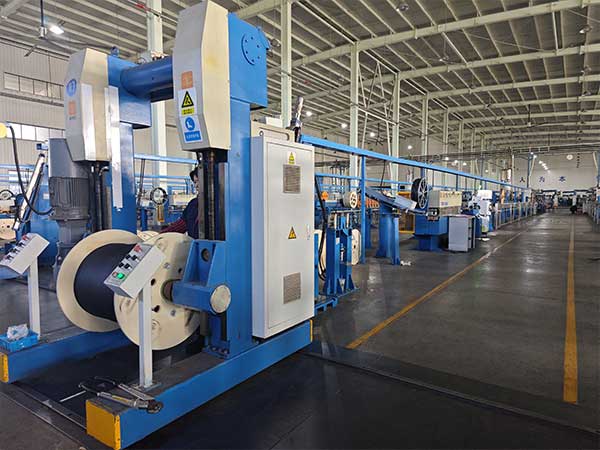ADSS fiber cable works in an overhead state with two points of support over a large span (usually hundreds of meters, or even more than 1 kilometer), which is completely different from the traditional concept of "overhead" (the standard overhead suspension wire hooking procedure of the post and telecommunications standard has an average of 1 support point for the optical cable every 0.4 meters). Therefore, the main parameters of ADSS cables are in line with the regulations of power overhead lines.

1. Ultimate operating tension (UES)
Also known as special use tension, it refers to the maximum tension that the optical cable is subjected to when it is possible to exceed the design load during the effective life of the optical cable. It means that the optical cable allows short-term overload, and the optical fiber can withstand strain within a limited allowable range. Usually, UES should be >60%RTS. Under this tension, the optical fiber strain is <0.5% (central tube) and <0.35% (layer twisting), and the optical fiber will have additional attenuation, but after this tension is released, the optical fiber should return to normal. This parameter ensures the reliable operation of the ADSS optical cable during its life.
2. Maximum allowable tension (MAT)
Refers to the tension to which the optical cable is subjected when the total load is theoretically calculated under the design meteorological conditions. Under this tension, the strain of the optical fiber should be ≤0.05% (layer twisting) and ≤0.1% (central tube) without additional attenuation. In layman's terms, the excess length of the optical fiber is just "eaten" up at this control value. According to this parameter, meteorological conditions and controlled sag, the allowable span of the optical cable under this condition can be calculated. Therefore, MAT is an important basis for sag-tension-span calculation, and is also an important evidence for characterizing the stress-strain characteristics of
ADSS fiber optic cables.
3. Rated tensile strength (RTS)
Also known as ultimate tensile strength or breaking force, it refers to the calculated value of the sum of the strengths of the bearing section (mainly spun yarn). The actual breaking force should be ≥95% of the calculated value (the breakage of any component in the optical cable is judged as cable breakage). This parameter is not optional, and many control values are related to it (such as pole tower strength, tension fittings, earthquake protection measures, etc.). For the optical cable industry, if the ratio of RTS/MAT (equivalent to the safety factor K of the overhead line) is inappropriate, even if a lot of nylon is used, and the available optical fiber strain range is very narrow, the economic/technical performance ratio is very poor. Usually, MAT is equivalent to about 40% RTS.
4. Annual mean stress (EDS)
Sometimes called daily mean stress, it refers to the tension of the optical cable under theoretical load calculation under windless and ice-free conditions and the annual average temperature. It can be considered as the average tension (stress) of ADSS during long-term operation. EDS is generally (16~25)%RTS. Under this tension, the optical fiber should have no strain and no additional attenuation, that is, it is very stable. EDS is also the fatigue aging parameter of the optical cable, and the vibration-proof design of the optical cable is determined based on this parameter.

For more ADSS optical cable technology, please consult:
Whatsapp/Wechat: +86 185 0840 6369;


